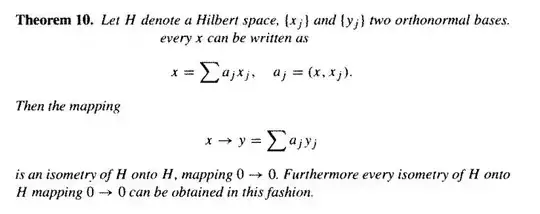We know all isometries of $\mathbb R^n $ are composition of transfer by orthogonal linear functions.
How to find all surjective isometries of Hilbert space?
Is there similarity?
We know all isometries of $\mathbb R^n $ are composition of transfer by orthogonal linear functions.
How to find all surjective isometries of Hilbert space?
Is there similarity?

norm induced by inner product is strictly subadditive.

By mazur-ulam theorem every surjective isometry of hilbert space is composition of a transfer and a linear function. So every surjective isometry of hilbert spaces are determined.
Source: Functional Analysis of Peter.Lax page 47 for theorem 9 and page 61 for theorem 10